Wondermondo 🢖 World 🢖 Wonders of Europe 🢖 Wonders of the Faroe Islands
Territory
Wonders of the Faroe Islands
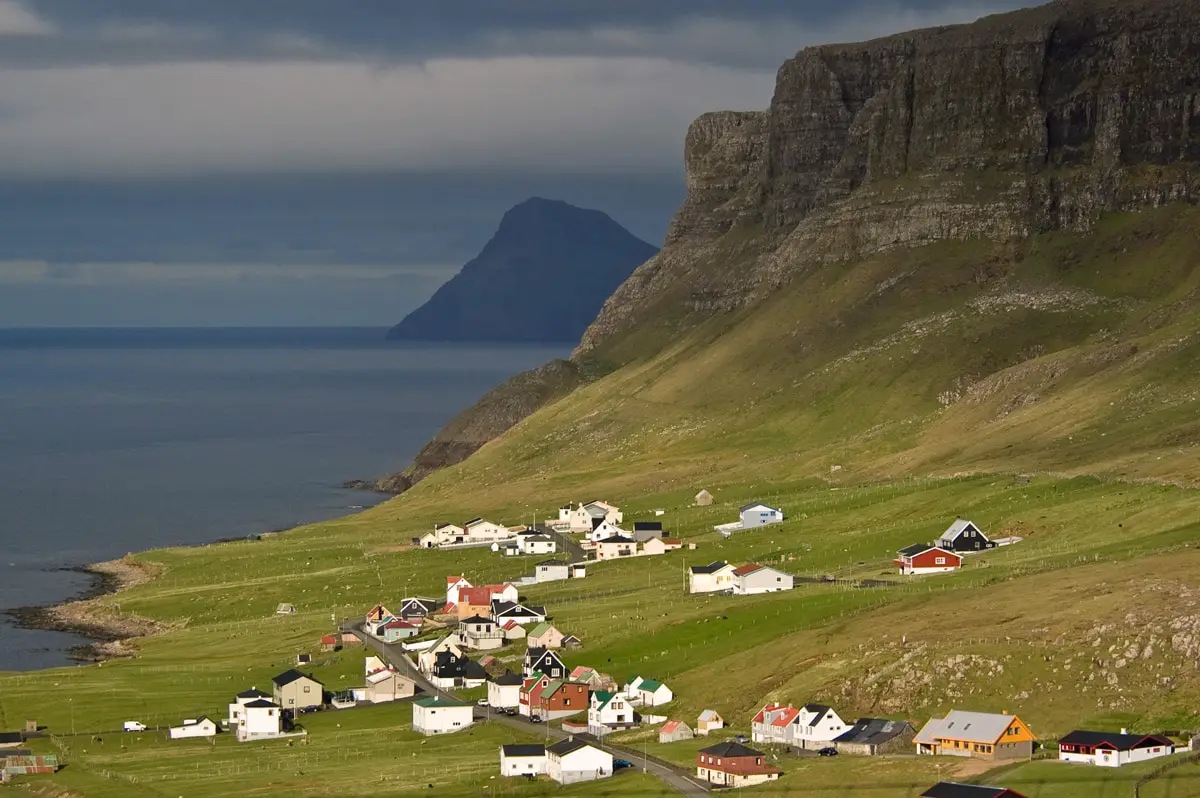
 Highlights
Highlights
These islands are an autonomous country within the Kingdom of Denmark.
The Faroe Islands are far from mainland Europe – but constitute an integral part of the European cultural realm. Islands are incredibly tidy, with top-notch infrastructure and… with breathtaking, pristine natural beauty. Maybe no other country can offer such fabulous Nordic nature together with historical architecture – even Norway.
The most amazing wonders of the Faroe Islands are:
- Cliffs and sea stacks. The Faroe Islands have numerous sea cliffs which rise more than 300 m tall – and the fantastic Enniberg Cape rises 754 m tall! Cliffs are inhabited by thousands of sea birds and are a part of Faroe history and traditions.
- Historical architecture. From time to time here come nightmarish storms which destroy the historical buildings – but Faroese people have developed many skills and created the local style of architecture which is adapted to the local climate. Islands have one of the oldest inhabited houses in the world – Kirkjubøargarður, which was built in the 11th century.
Map with the described wonders
If you see this after your page is loaded completely, leafletJS files are missing.
 Top 25 wonders of the Faroe Islands
Top 25 wonders of the Faroe Islands
Geological wonders
Drangarnir (Dragonir)
Vága
Amazing sea stack with a natural arch in it.
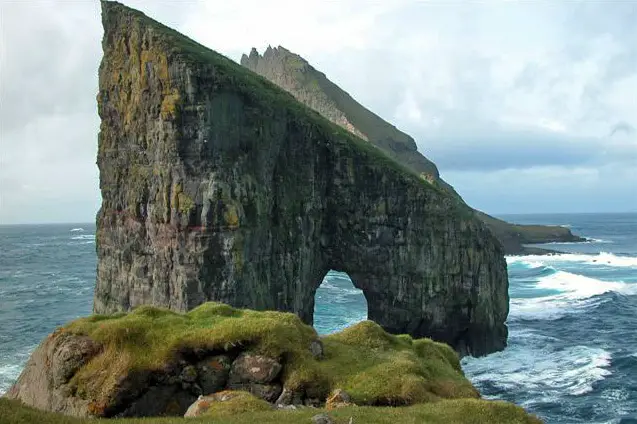
Enniberg Cape
Norðoyar
754 m tall sea cliff, the second tallest in Europe. Inhabited by a large bird colony.
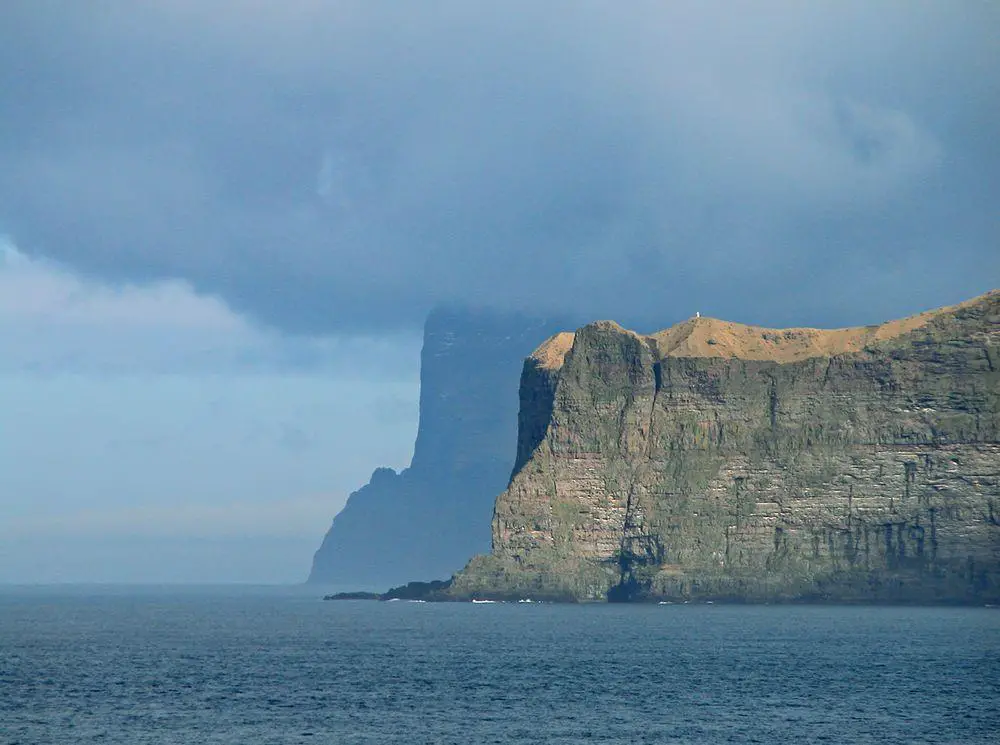
Álvagjógv
Streymoyar
"Elf gorge" – dramatic, several hundred meters deep gorge ending in the sea. Thousands of birds are nesting here.
Risin and Kellingin
Streymoyar
Two legendary sea stacks, respectively 75 and 73 m tall, one with a natural arch in it. According to legends these stacks are petrified Icelandic troll and his wife.
Precipices near Trollanes
Norðoyar
More than 500 m tall, nearly vertical seaside cliffs.
Bøsdalafossur
Vága
Beautiful, approximately 30 m tall waterfall that falls directly from a lake into the sea.
Eystfelli cliffs
Norðoyar
Up to 448 m tall, vertical cliffs.
Beinisvørð
Suðuroyar
470 m tall sea cliff.
Eysturhøvdi precipice
Norðoyar
345 m tall precipice at Svínoy, rising from the sea.
Fossá, Streymoy
Streymoyar
One of the best-known and largest waterfalls in Faroe. Height – 110 – 140 m, two vertical cascades.
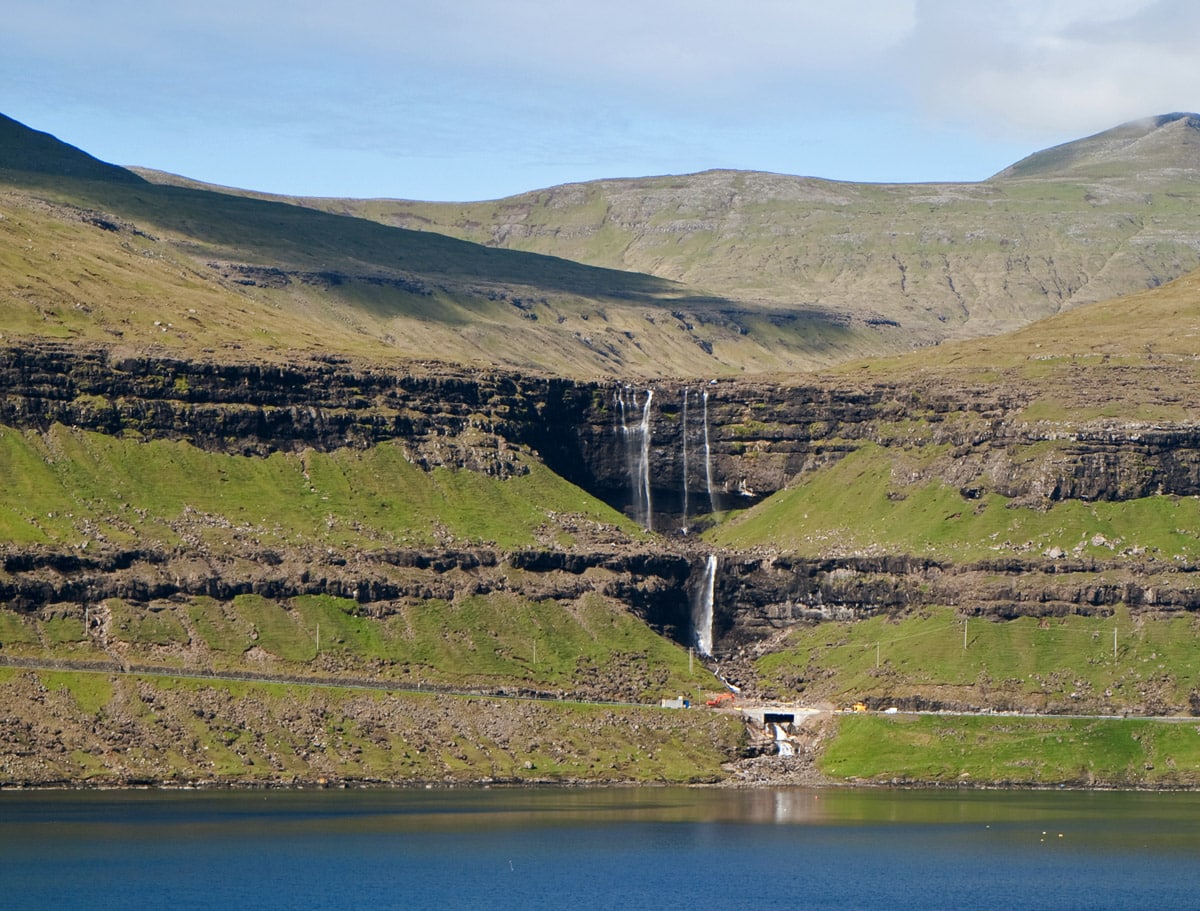
Mykines bird cliffs (Vestmanna bird cliffs)
Vága
Up to 600 m tall sea cliffs. On the steep northern side of the island are located bird cliffs that are inhabited by many thousands of birds, mainly puffins, and gannets.
Rinkusteinar
Eysturoyar
Two enormous rocking stones that are rocked forth and back by the sea waves.
Biological wonders
Lítla Dímun sheep
Suðuroyar
A small island surrounded by steep cliffs. Despite its small size and vertical cliffs, this island has been inhabited by sheep since the Neolithic Age. Unfortunately, the native sheep have been eliminated, and now there live Faroese sheep that traditionally are collected from the island once per year.
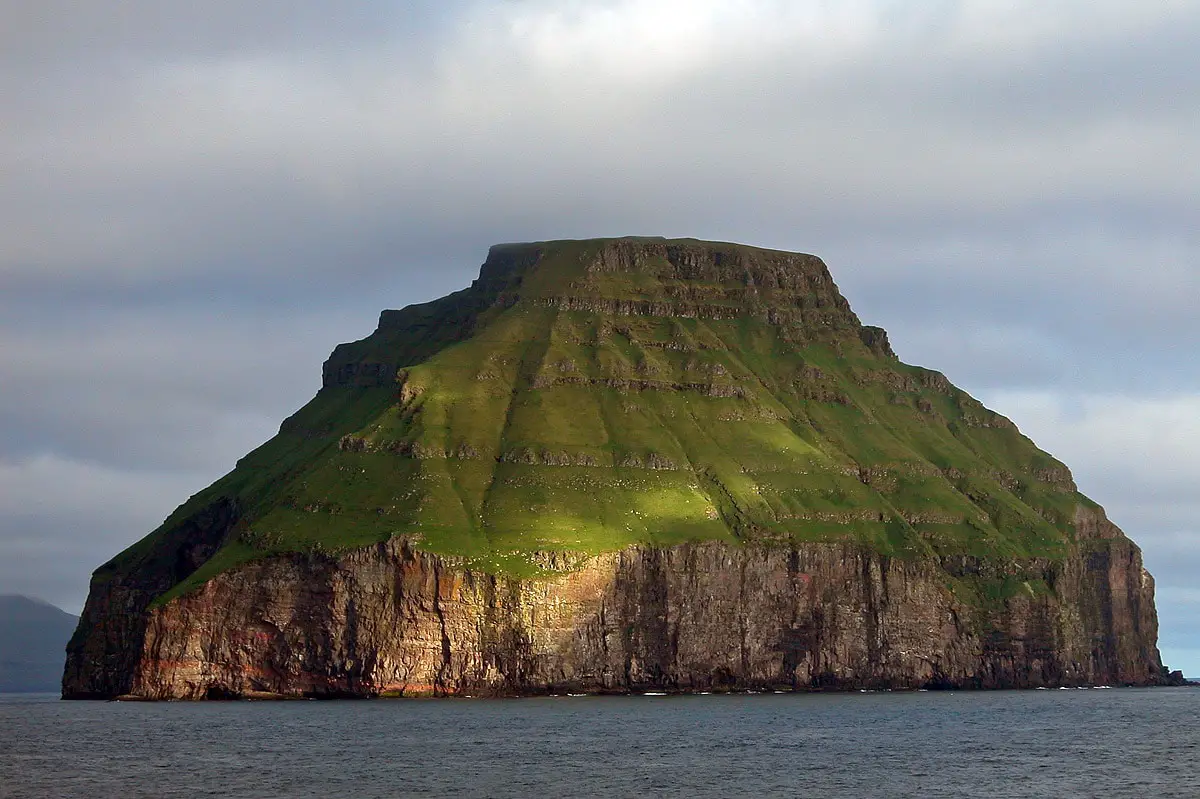
Architecture wonders
Tinganes (Old Tórshavn)
Streymoyar
The historical center of the Faroe Islands, a location where the Faroese parliament (Ting) started to meet in 825. Now, this is a charming old town with old wooden buildings from the 16th and 17th centuries. Some wooden houses still have turf roofs.
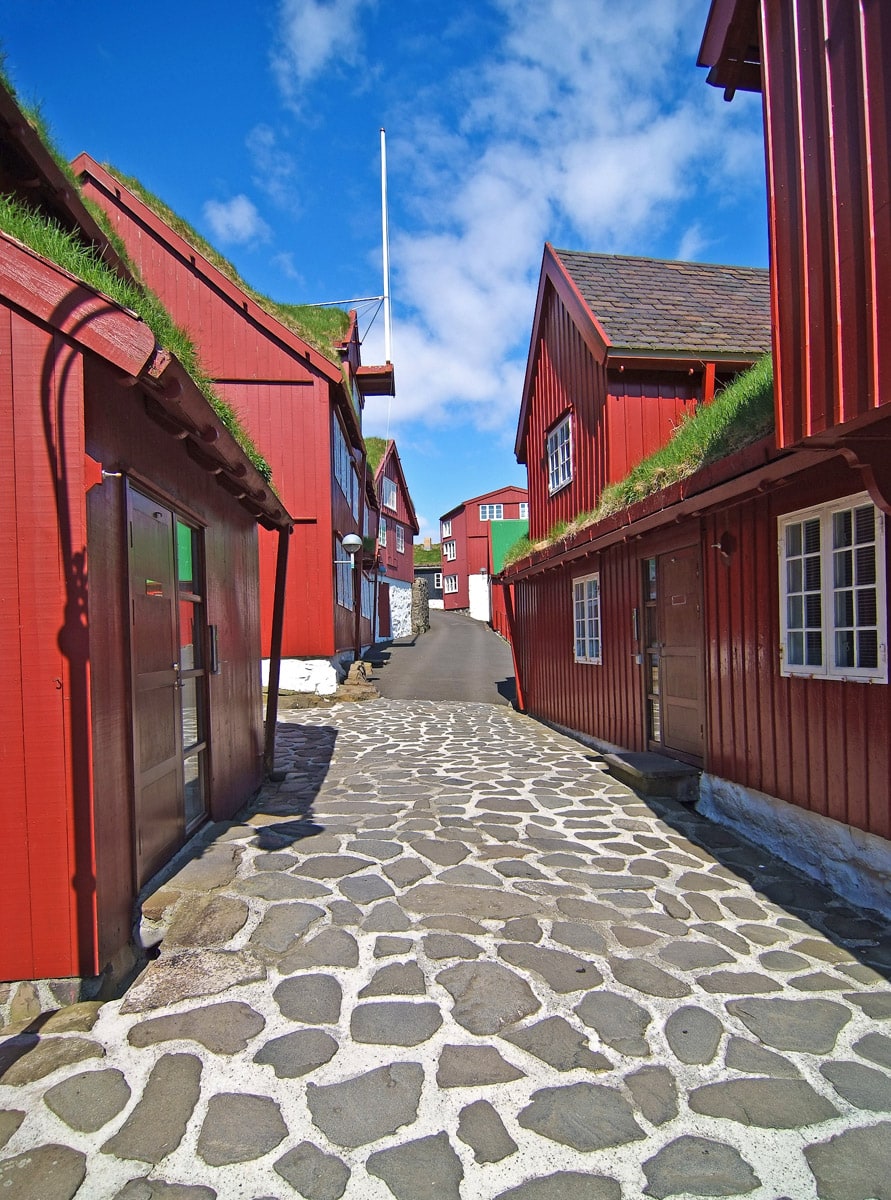
Kirkjubøargarður (Roykstovan)
Streymoyar
One of the oldest inhabited wooden houses in the world, built in the 11th century.
Kálvalíð
Vága
One of the oldest buildings in the Faroes – a small building built into the hillside with just one window in it.
Hvalvík Black Church
Streymoyar
The oldest wooden church in Faroe, built in 1829. This is the oldest of traditional black churches.
Porkeri Church
Suðuroyar
Wooden church with turf roof, built in 1847. Contains a collection of donations by seamen who survived dangerous storms.
Sandavágur runestone
Vága
Runestone from the 13th century. The inscription tells that Norvegian Viking Torkil Onundarson was the first settler in the current Sandavágur.
Funningur Church
Eysturoyar
Wooden church with a turf roof, built in 1847.
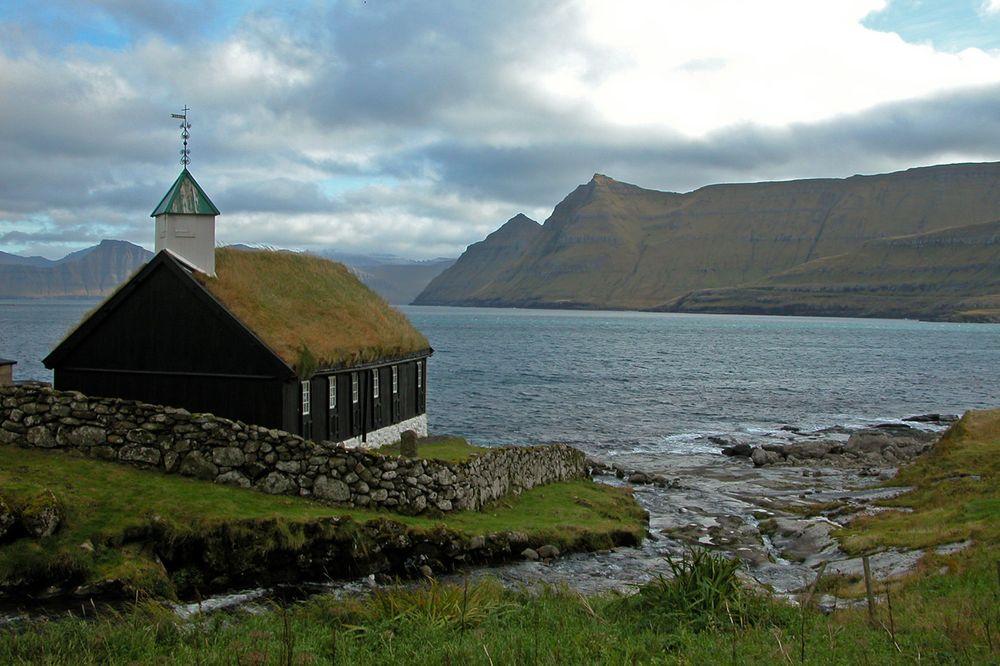
Skansin
Streymoyar
Historical fortress, built in 1580 by Magnus Heinason to protect the islands from Scottish pirates. Expanded in 1780 and later.
Christianskirkjan
Norðoyar
This church was constructed in 1963, in Old Norse style, using many ancient construction techniques and design elements. Church has excellent acoustics.
Haldarsvik Church
Streymoyar
A picturesque octagonal church, built in 1856. The altarpiece of this church is adorned with Apostles who have faces of known Faroese people.
Magnus Cathedral
Streymoyar
Ruins of a Gothic cathedral that was built around 1300 and never completed. This is the largest and most interesting medieval building in the Faroe Islands.
The Eysturoy tunnel roundabout
Eysturoyar
The first undersea roundabout in the world, located at the depth of 72.6 m. The total length of the system of road tunnels here is 11.24 km. The tunnel was built in 2017-2020. Roundabout is adorned with the art of the artist Tróndur Patursson.
 Recommended books
Recommended books
Faroe Islands (Bradt Travel Guides)
Still the only English-language guide to the Faroe Islands, covering everything from succulent fish suppers to remote hideaways, the Bradt guide is the definitive source of information for visitors wishing to discover the 18 islands of this North Atlantic archipelago. Covering hands-on information about where to stay and eat, how to get around – be it by mail boat, helicopter or hire car – and what to see and do, this new fourth edition has been thoroughly updated and includes details of the amazing birdlife, where to walk some of Europe’s least-known hiking trails, and how to make the most of village life among the turf-roofed houses.
The Faroe Islands
The Faeroes are a small community on a remote group of islands in the Atlantic containing a successful economy and a notable culture where the arts flourish. The Faeroes, whose growing numbers exceed the populations of Orkney and Shetland combined, have avoided many of the strains and dislocations that beset the rest of us. This text tells the story of the Islands, their history and natural history, and their people. The astonishing beauty of the Islands, which rise in most places vertically from the sea, and the Faeroes way of life today, are depicted in the many photographs by Gunnie Moberg and Trondur Patursson’s drawings hauntingly evoke the Viking past.


